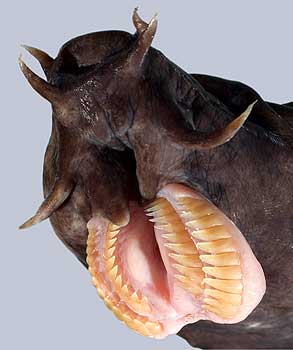
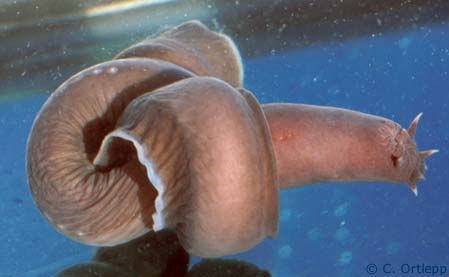
Myxini: Hagfishes
Made of one order (Myxiniformes) and one family (Myxinidae), the group commonly known as "hagfish" are the most basal of all fishes. This group is not even considered part of vertebrates, because they lack embryonic vertebrae.
INTERESTING INTERNAL CHARACTERISTICS: Hagfish have four simple hearts throughout their bodies, which even beat at different rates. Their blood is also isoosmotic with seawater, which means it is much saltier than normal vertebrate blood. Hagfish teeth are not visible unless the hagfish opens its mouth, and are not even considered real teeth. These teeth plates are made of keratin, and the jaws open sideways and outwards instead of up and down. Hagfish have only one semicircular canal, used for orientation. This is different than jawed vertebrates, who have three canals.
INTERESTING EXTERNAL CHARACTERISTICS: Hagfish have a single nostril. They also lack functional eyes. They have multiple gill openings along the body, and numerous slime glands too.
HAGFISH SLIME: Hagfish, constantly produce a copious slime from 70-200 glands along their body. These glands produce a mucus that reacts with water to form a thick jelly. Take a look HERE to see a video of this reaction! There are a few reasons why hagfish produce slime. It can be used defensively, to clog the gills of predators that try to eat the hagfish. It may protect the hagfish from enzymes in its decomposing prey. It may also be used like normal fish mucus, to protect the hagfish from microbes in the water. However, excess mucus could suffocate the hagfish, so this is prevented by forming a hagfish knot...
HAGFISH KNOTS: Hagfish are able to tie themselves into knots! Think of them as a slimy, creepy rope, swimming around the bottoms of the ocean. By forming a knot and pushing it along its body, a hagfish can push off extra slime to prevent suffocation. The knot is also used while feeding. As a hagfish grasps its prey, it pushes the knot towards its head, using it to pull off a chunk of flesh. Gross.
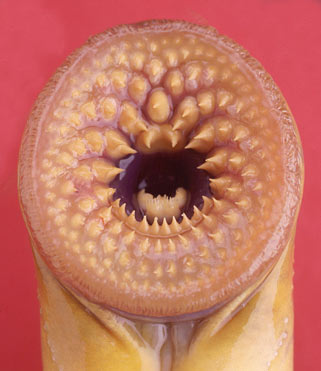
Petromyzontida: Lampreys
Made of one order (Petromyzontiformes), these are the lampreys. Although similar to the hagfish, they differ in that they have TWO semicircular canals!
LIFESTYLE: Lampreys can be either parasitic or non-parasitic. All lampreys begin life as an ammocoete larva. Parasitic lampreys eventually mature into adults, feed on the blood of other fishes, then reproduce and die. Non-parasitic lampreys do not feed as adults, but still reproduce and die. Lampreys may spend their whole lives in freshwater, or spend part of their life in saltwater but return to freshwater to spawn.
CHARACTERISTICS: The lamprey has a circular mouth, ringed by rows of keratin teeth. It uses these teeth to grasp its prey. It then rasps at the prey with its tongue teeth. Lampreys have well-developed eyes, along with a single median nostril that protrudes from the top of its head. Behind the nostril is the pineal organ, a light-sensing structure which might be used to observe changes in daylight.
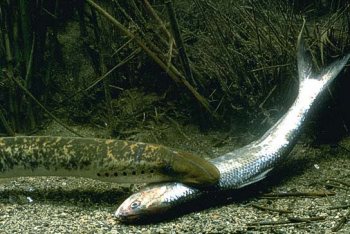
Petromyzontidae: Sea Lampreys
These are "typical" lampreys. They have become an invasive species in many lakes caused by entry through the canal system, or in ship ballast. I've already listed pretty much everything that's exciting about them above. Sorry. They have been used in research, because their brains are thought to make a good model of the primitive vertebrate brain.
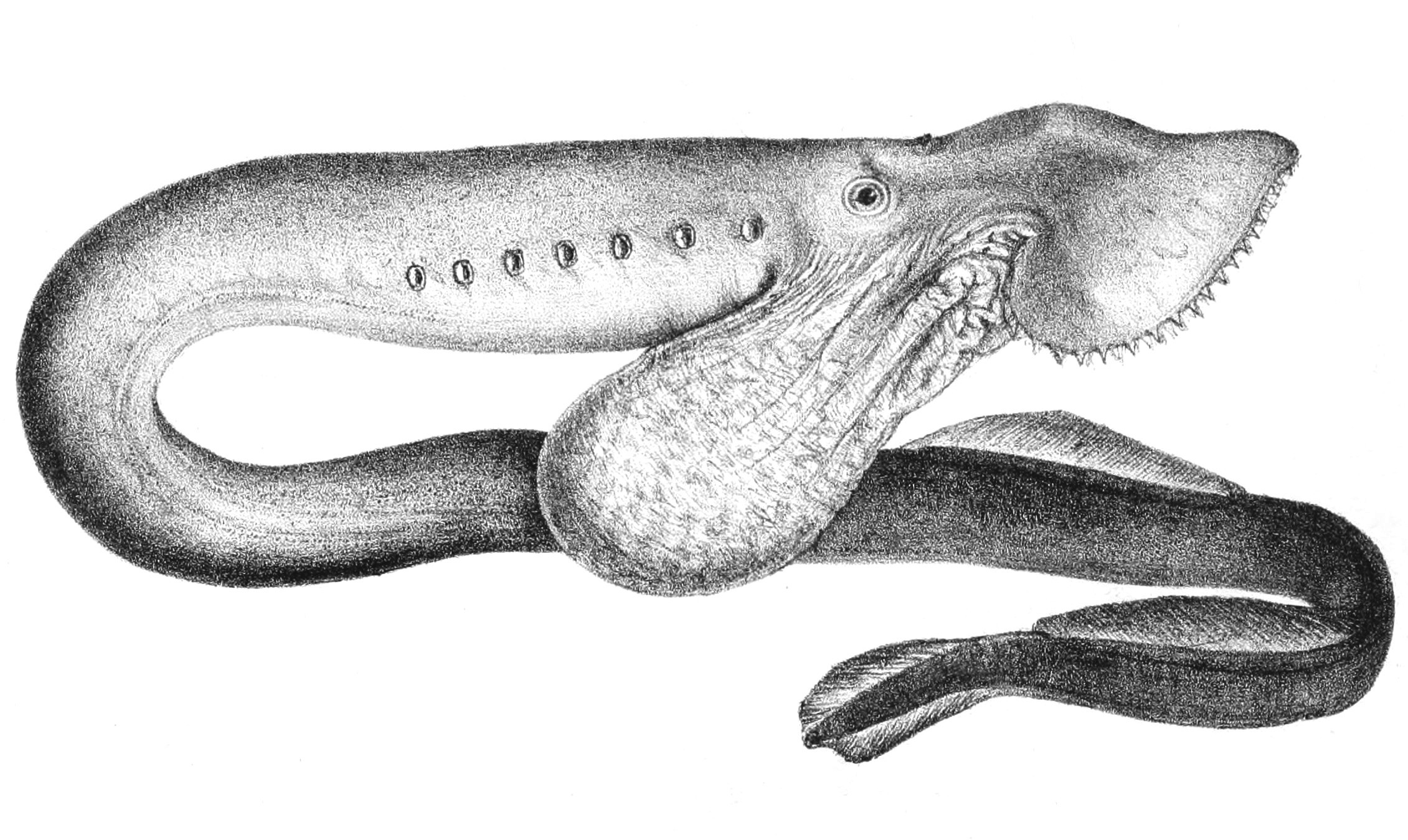
"Geotria australis" by W.Wing - List of the specimens of fish in the collection of the British Museum. Licensed under Public domain via Wikimedia Commons
Geotriidae: Southern Lampreys
There is only one species, Geotria australis in this family. The males, as seen in the picture, develop a pouch below their mouths. It is possible that this pouch is used for carrying stones, which are used for building nests, but one paper suggests the pouch is instead used for courtship displays. This lamprey is found only in the southern hemisphere.
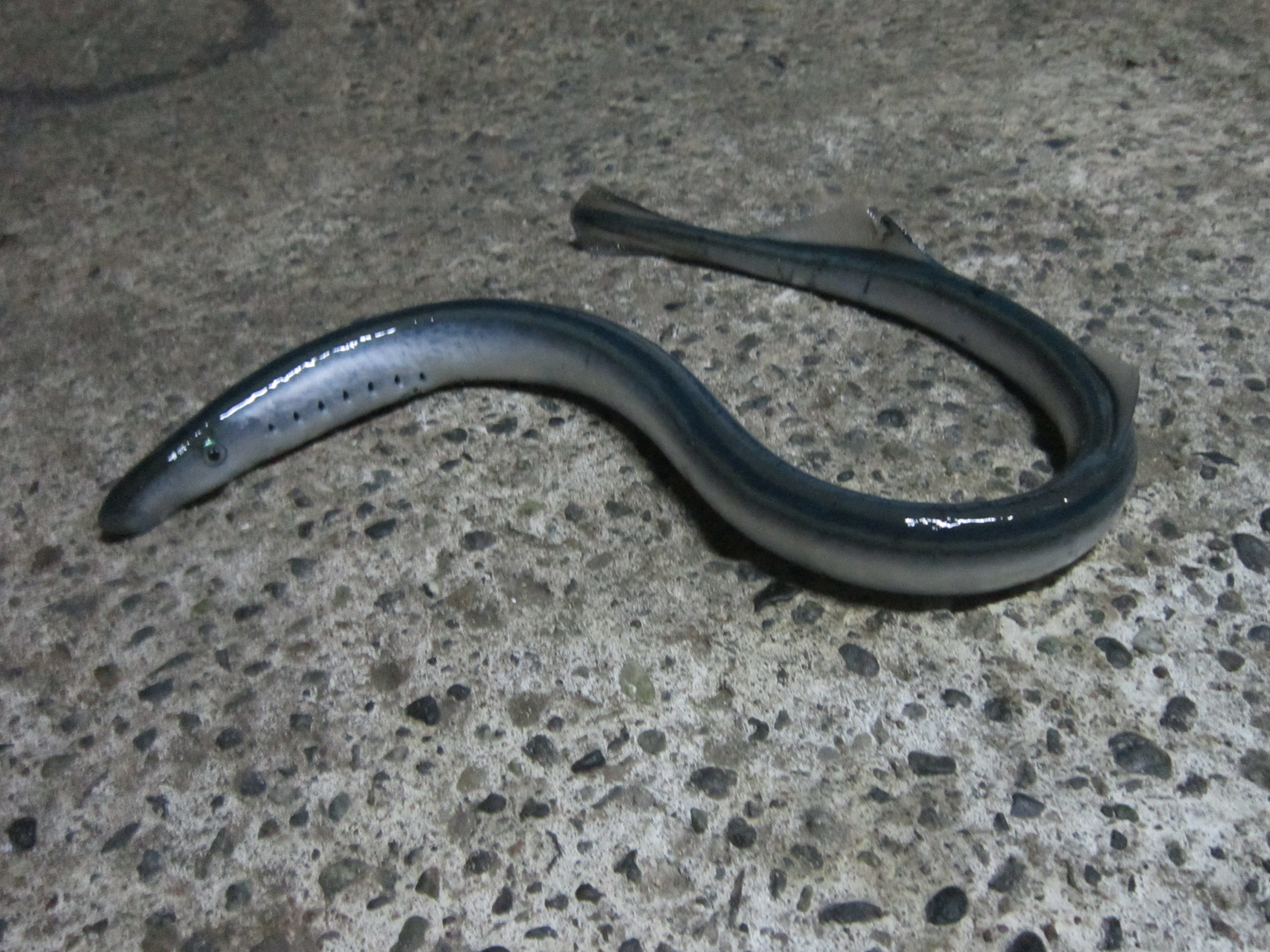
"Mordacia lapicida (Lamprea Chilena)" by Memobig2 - Own work. Licensed under Creative Commons Attribution-Share Alike 3.0 via Wikimedia Commons
Mordaciidae: Topeyed lampreys
One genus, Mordacia, with three species total. The eyes are located more dorsally than in other lamprey species (very exciting stuff).